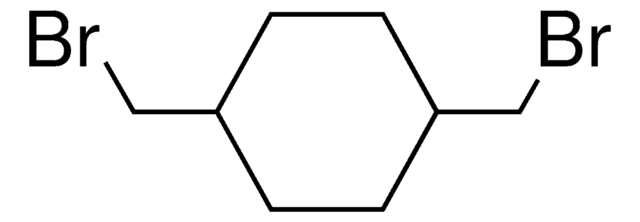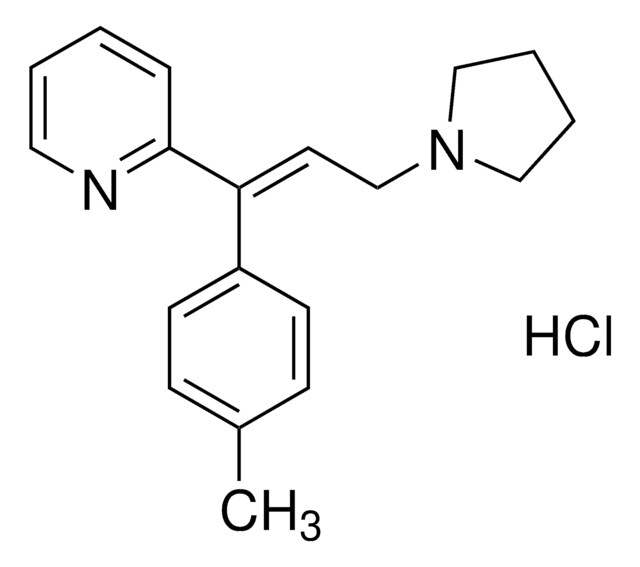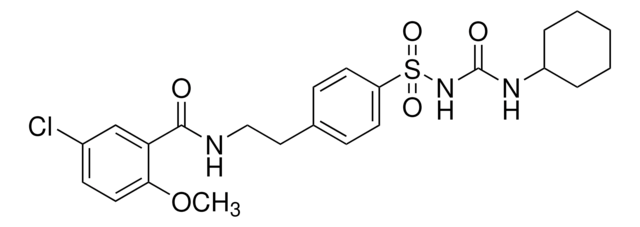推荐产品
品質等級
化驗
≥98% (HPLC)
形狀
powder
儲存條件
desiccated
顏色
white to beige
溶解度
DMSO: >2 mg/mL (warmed)
儲存溫度
2-8°C
SMILES 字串
Cc1ccc(cc1)\C(=C/CN2CCCC2)c3cccc(\C=C\C(O)=O)n3
InChI
1S/C22H24N2O2/c1-17-7-9-18(10-8-17)20(13-16-24-14-2-3-15-24)21-6-4-5-19(23-21)11-12-22(25)26/h4-13H,2-3,14-16H2,1H3,(H,25,26)/b12-11+,20-13+
InChI 密鑰
PWACSDKDOHSSQD-IUTFFREVSA-N
基因資訊
human ... HRH1(3269)
應用
Acrivastine has been used as an antihistamine to investigate the relation between the increased residence time of antihistamine at the histamine H1 receptor (H1R) and the duration of effective target-inhibition by this antagonist.[1]
生化/生理作用
Acrivastine is a second-generation H1-receptor antagonist.
Acrivastine is a second-generation antihistamine, an H1-receptor antagonist.
Acrivastine is a second-generation antihistamine. It is a derivative of first-generation compound triprolidine. Acrivastine is effectively used for treating allergic diseases including cholinergic urticaria and histamine-medicated dermatoses.[2]
儲存類別代碼
11 - Combustible Solids
水污染物質分類(WGK)
WGK 3
閃點(°F)
Not applicable
閃點(°C)
Not applicable
历史批次信息供参考:
分析证书(COA)
Lot/Batch Number
Xiaochen Gu et al.
Journal of pharmaceutical and biomedical analysis, 37(4), 663-667 (2005-03-31)
High-performance liquid chromatography (HPLC) was used for the simultaneous quantification of the H(1)-antihistamine acrivastine and the decongestant pseudoephedrine hydrochloride. Both compounds were detected at the wavelength of 214 nm. The influence of the mobile phase and the detection wavelength was
M J Mattila et al.
European journal of clinical pharmacology, 55(2), 85-93 (1999-05-21)
Most of the modern non-sedating H1 receptor antagonists (antihistamines) penetrate the brain poorly, allowing the use of doses large enough to counteract allergic processes in peripheral tissues without important central effects. The antihistamines reviewed here are acrivastine, astemizole, cetirizine, ebastine
The target residence time of antihistamines determines their antagonism of the G protein-coupled histamine H1 receptor
Bosma R, et al.
Frontiers in Pharmacology, 8(10), 667-667 (2017)
A Reimers et al.
Clinical and experimental allergy : journal of the British Society for Allergy and Clinical Immunology, 32(12), 1763-1768 (2003-03-26)
Leukotriene receptor antagonists have shown some efficacy in t he treatment of asthma. Injection of LTC4, LTD4 and LTE4 into the skin leads to a weal-and-flare reaction, suggesting an involvement of leukotrienes in the pathogenesis of urticaria. Indeed, various reports
R D Mann et al.
BMJ (Clinical research ed.), 320(7243), 1184-1186 (2000-04-28)
To investigate the frequency with which sedation was reported in post-marketing surveillance studies of four second generation antihistamines: loratadine, cetirizine, fexofenadine, and acrivastine. Prescription-event monitoring studies. Prescriptions were obtained for each cohort in the immediate post-marketing period. Event data were
Active Filters
我们的科学家团队拥有各种研究领域经验,包括生命科学、材料科学、化学合成、色谱、分析及许多其他领域.
联系技术服务部门








